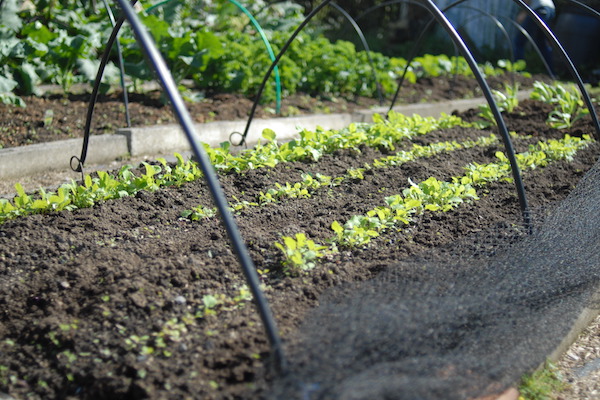
For gardeners, crop rotation can often seem difficult or confusing. The fact is it's actually quite easy and for organic gardeners, a really important aspect of growing vegetables.
But why practise crop rotation? The answer is simple. Following the basic steps will help prevent the buildup of pests and diseases and help grow stronger nutrient-dense vegetables.
Every crop takes what it needs from the soil…
- Root crops (like carrots and beetroot) use more phosphorus
- Fruiting crops (tomatoes, cucumbers etc) use more potassium
- Green leafy crops (lettuce, silverbeet etc) use more nitrogen
- Peas and beans, on the other hand, put nitrogen back into the soil (they're what we call Nitrogen crops, along with the green manure crops like lupins, oats and lucerne).


If we plant tomatoes in the same spot year after year, we use up the all the elements in the soil that make tomato plants strong and fruit well. And when plants don't thrive, they're more prone to pest attacks and disease.
Another problem is soil-borne diseases. Tomatoes with blight will pass on the disease to the next season's crop, if you plant tomatoes back in the same bed. The same goes for green leafy vegetables which suffer from rust problems.
Making a crop rotation plan is easy…

In areas with very cold winters, this rotation will take 4 years. However, in most areas in New Zealand we can grow a summer crop and a winter crop, so this rotation can be covered in two years.
There may be times when this plan is not practical. When you only have one bed or you only grow one or two types of crops, there are ways you can quickly create healthy soil. Firstly, add more compost to your beds to build up organic matter. Compost aerates soil, making it a better environment for bacteria, fungi and earthworms to survive. Then add important nutrients back into your beds and natural, organic choices are the best…
- Volcanic rock dust is full of 70 essential plant minerals and vitamins
- Seaweed, is full of trace elements, many of which are not found on land
- Animal manures are high in nitrogen - sheep pellets are a great example with the bonus of being slow-release

Crop rotation has been used successfully for centuries by organic gardeners. Today with the relatively recent practices of mono-cropping, plant health is dependent on the application of chemical sprays and fertilisers. But by practising the steps of crop rotation, we can grow healthy, nutrient-dense organic vegetables every year.

